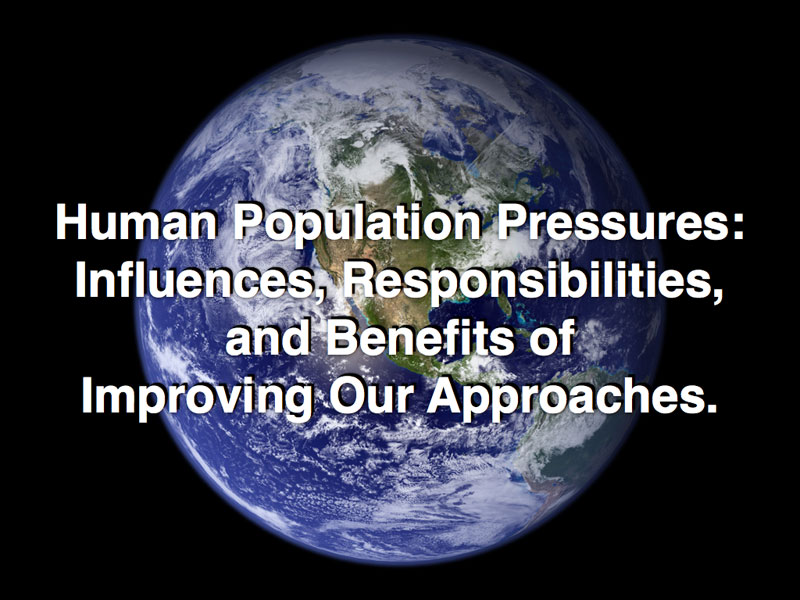

Thank you for coming to our panel this morning. I’m Les Knight, and this is Stephanie Feldstein from the Center for Biological Diversity, and Carter Dillard, President of Having Kids. We each have different perspectives on human population to share with you all.
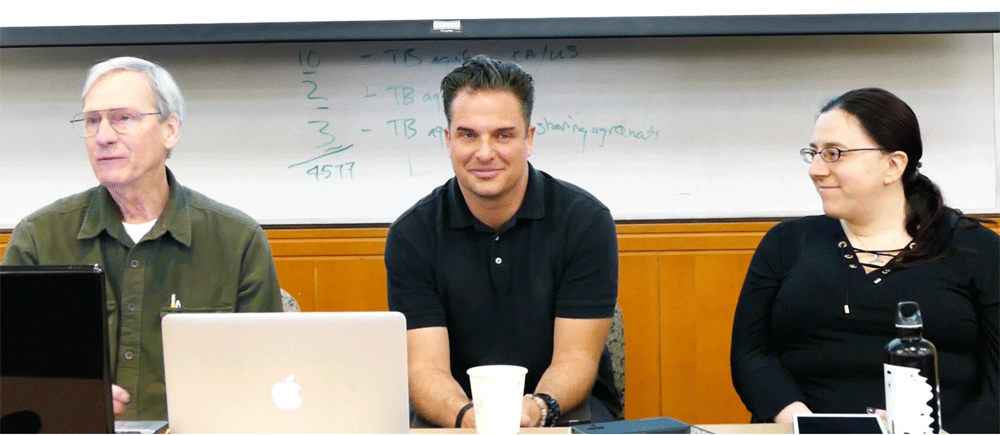
But first, let's look at the results of our survey.
[An optional online survey was offered and about a third of those in attendance participated with their phones. Correct answer, if there is one, is in bold.]
The current human population is
4.5 billion
7.5 billion
9 billion
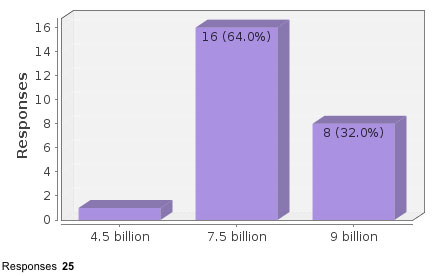
The number of humans added each year is
32 million
78 million
150 million
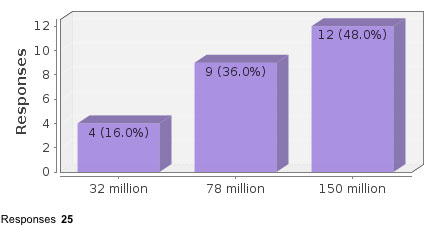
The current global fertility rate is
2.5
3.5
4
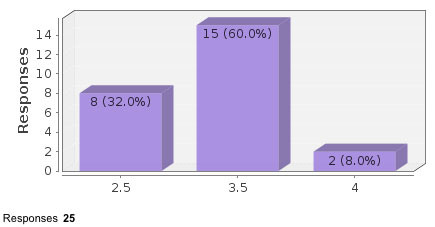
Does human population growth have a negative impact on the environment?
Maybe, though our consumption could be more of a factor
Not really: if we changed the way we live there wouldn't be too many of us.
Definitely: wherever we live not much else lives.
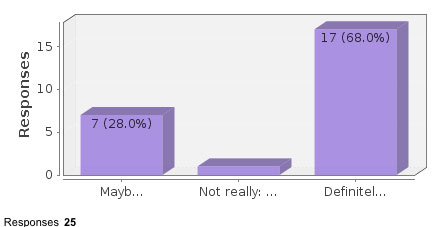
What's the ideal, sustainable human population for Earth's biosphere?
Fewer than 1 billion
1 to 3 billion
4 to 7 billion
8 billion or more
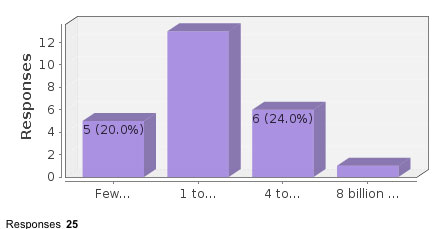
Natalism or Pronatalism
Haven't heard of them
Vaguely know what it means
Familiar with the term
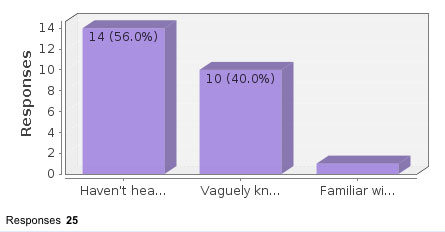
Antinatalism
Haven't heard the term
Vaguely know what it means
Familiar with the term
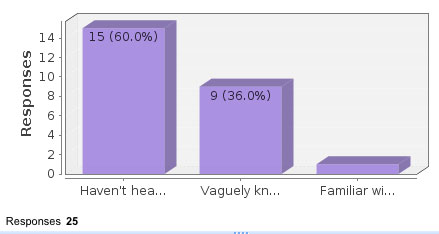
I’d like to talk about natalism, also called pro-natalism, but that seems redundant to me. It refers to attitudes and institutions which encourage procreation. We often talk about human overpopulation as the elephant in the room, but the underlying cause of our excessive presence is even more invisible and pervasive.
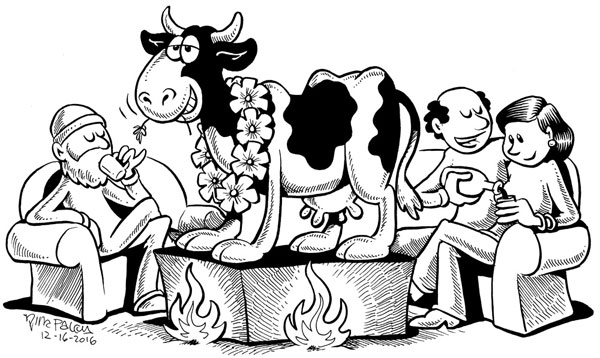
Natalism is the 800 pound sacred cow in our living room that few recognize and fewer want to talk about. All societies have evolved to be natalist through natural selection: those which didn’t encourage breeding were out-bred by those which did. Excessive breeding enabled societies to overpower others as their military ranks expanded. All great civilizations eventually collapse under the weight of their own fecundity, but short term success seduces nations to keep doing what they’re doing and fosters an inability to even think about rethinking existing paradigms. This is the situation our civilization is in today, and this time it’s global.
Natalism is similar to patriarchy in that once we recognize it, evidence is everywhere. It probably started before we became Homo sapiens, and other institutions grew out of it as we progressed from tribes to chiefdoms to empires. Social institutions coevolve the same way species coevolve in natural ecosystems. Hierarchy, patriarchy, formal religions, slavery, and economic systems are co-dependent on natalism. Since they depend on each other, if one is changed too fast, the ecosystem becomes unstable for a while. When we suggest that fewer humans are created instead of more, it’s a threat to the stability of our entire social system. This is important when we consider how we want to encourage an improved human fertility rate.
The most immediate example of natalism is the way people who choose not to procreate must defend their decision, but anyone who chooses to procreate is unquestioningly congratulated.
How many likes does someone get when they post a sonogram of their fetus? How many if they announce they’ve decided not to procreate? And it doesn’t matter how awful the circumstances are—congratulations is the only acceptable comment.
If you’ve decided not to procreate, you know first hand how pervasive natalist pressure is. The reverse is almost non-existent.
I have a two minute video I think you might enjoy.
Happy pregnancy test.The default life is so ingrained that we’ll never see this play out in real life. Individual couples experience the relief and happiness of not being pregnant, but the whole family isn’t going to jump for joy at their announcement.
A broader example is society’s defense of the right to procreate, while ignoring the basic human right to not do so. Any perceived restriction on the right to procreate generates righteous outrage. China’s one-child policy was almost universally vilified, no matter how much it helped raise standards of living and saved lives. Naturally I’m not advocating restrictions on procreation, and it’s rare that a government or organization does. Involuntary sterilization has been carried out, often with genocidal intent, but except for China, restricting procreation is rare in human history.
On the other hand, coercive population control exists all over the world, including right here in the US. The basic human right to not procreate is restricted to varying degrees virtually everywhere. Consequences of forcing women to procreate when they don't want to are far worse than denying them their right to procreate. Reproductive freedom includes both rights but a natalist perspective causes us to be more concerned with the latter.
Reproductive freedom has historically been under attack by powerful institutions such as the Catholic Church, and lately Republicans have stepped up their attacks, but the institution of natalism itself is what allows these minorities to get away with it without the condemnation it deserves.
Young people have a hard time finding a provider for vasectomy or tubal ligation. The doctor tells them,
“You’re too young, you might change your mind.”
“Well, am I old enough to have a baby?”
“If you feel you’re ready, sure.”
“What if I change my mind?”
Cause and effect from statistical correlations in demography often reflect a natalist bias. In many cases, correlation doesn’t prove causation and other factors are involved, but typical demographic conclusions lean toward natalism—ignoring the possibility that anything negative could ever come from human births.
For example, a virtually unquestioned cause and effect is that lower infant and child mortality precipitates lower birth rates. It makes sense that a couple will have fewer offspring when they know more will survive. The Gates Foundation hopes to improve birth rates in Africa by providing vaccinations, which save children’s lives so couples naturally won’t want as many children. Reducing infant mortality is a good in itself, but does it reduce fertility rates?

Fertility declines as more children survive childhood, and it’s also true that more children survive childhood as fertility declines. When couples have fewer mouths to feed, those mouths are more likely to be fed. Natalist bias overlooks this perspective.
The chart seems to show a correlation, but between 1960 and 2014, improvements in public health influenced both infant mortality and fertility. The two factors likely influenced each other, and the line for the world as a whole shows both happening at about the same time. (1)
Examples of this natalist bias are plentiful. Do educated people have fewer offspring or does having fewer offspring increase opportunities for education? Do poor people have more offspring, or does having more offspring make people poor? I don’t mean to blame the economically disadvantaged for their plight—there are several factors involved, and a lack of health care is a big one. On the national level, a high birth rate can cause a demographic trap that prevents economic growth needed to provide health care that would lower birth rates.
[cut from presentation]
One study even concluded that women who are poor and die early have more offspring and have them younger.(2) It’s like a doctor determining that a prolapsed uterus and osteoporosis must be why a patient gave birth so many times.
[return to presentation]
A natalist perspective prevents logical analysis of human population growth. The late, world famous statistician, Hans Rosling, said human population increase isn’t caused by births.
“...the increase with 2 billion is comprised by already existing persons growing up to become adults, and old people like me (+60 years). So when I hear people saying that population growth has to be stopped before reaching 9 billion, I get really scared, because the only way to achieve that is by killing.”
Phillip Longman, author of The Empty Cradle: How Falling Birthrates Threaten World Prosperity and What To Do About It agrees:
“...most of the remaining population growth, for the globe as a whole, is coming from people who’ve already been born.”
These statements show how natalist thinking can prevent logical conclusions. They’re considering births to be something that just happens, so other influences must be examined.
371,000 births
158,000 deaths
213,000 growth.
Births minus deaths equals growth: positive or negative. Today, 371,000 people will be born and 158,000 will die, for an increase of 213,000. (3)
Rosling and Longman probably mean that increased lifespans are prolonging deaths, so population growth is not caused by the high birth rates from a lack of reproductive freedom and responsibility, it’s old people’s fault for not dying soon enough.
We aren’t really living much longer, it’s just that more of us are reaching old age, so the average life expectancy is statistically higher. It would take four people dying 20 years early to equal the 80 years of environmental impact a newborn will have. I’m probably biased in my opinion that preventing one birth is a better way to reduce our environmental impact than me and three of my old friends dying early.
[cut from presentation]
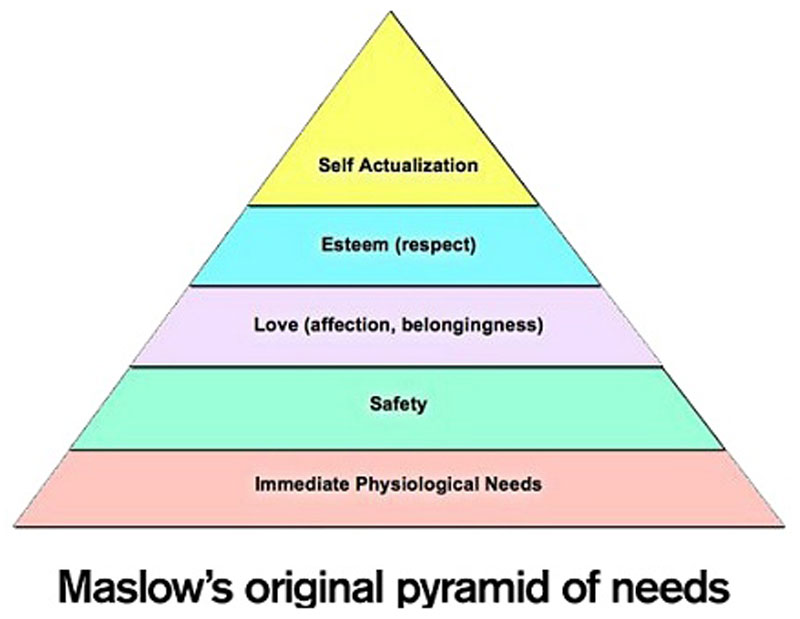
Abraham Maslow’s hierarchy of needs is meant to apply to all humans, though a two dimensional drawing will naturally have its shortcomings. We focus on fulfilling each need before moving on to the next, and will revert to a more basic need when necessary.
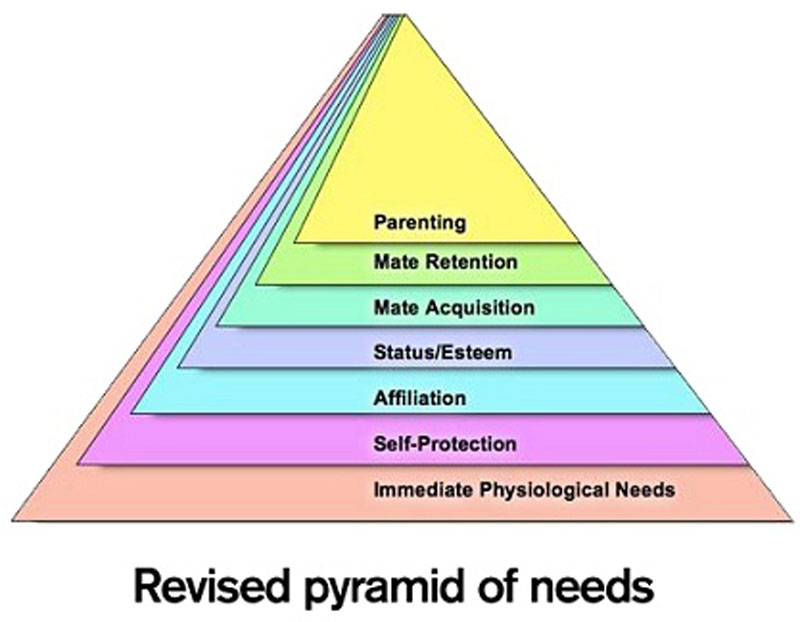
A team of psychologists revised the pyramid "to reflect the last 50 years of research." Many of you may be surprised to learn that you have an inborn need to find a mate, retain them, and become a parent. There seems to be a natalist influence here. First comes love, then comes marriage, then comes your name here with a baby carriage. The default life is culturally programmed and heavily influenced by natalism, as this team of scientists seems to have been.(4)
[return to presentation]
The opposite of natalism could naturally be called antinatalism: assigning a negative value to human births. Right now, the term most often refers to a philosophy Arthur Schopenhauer expressed in the early 1800s, and which was recently resurrected by David Benatar, a South African philosophy professor. Basically, we have no right to bring someone out of non-existence, where they aren’t suffering, and into existence where they surely will suffer. Lately the term is being applied to any promotion of human non-procreation, regardless of the reason. Some of us favor non-procreation out of concern for the environment, non-human animals, or for humanitarian reasons.
Antinatalist thinking goes against a million years of evolution, but we do a lot of things that go against our biological and cultural programming... fortunately. It’s not easy, and usually requires rethinking deeply held beliefs. We also must overcome a fear of rejection and alienation—our third level of need in Maslow’s pyramid.The spiral of silence is one way society maintains the status quo—preventing divisive ideas from being voiced. People don’t talk about something because people don’t talk about it. When enough people voice an opinion, we start talking about it. Acknowledging the 800 pound sacred cow in our living room is the first step toward dealing with it.
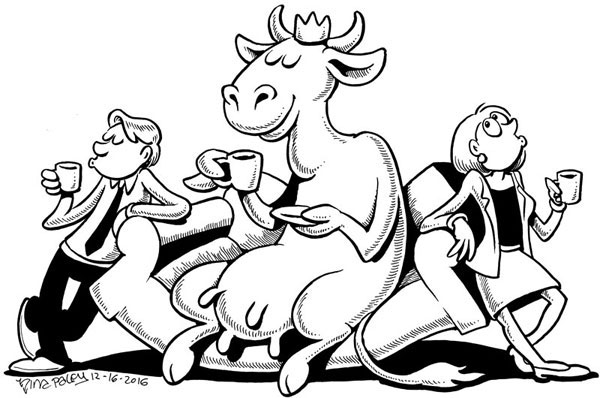
How can we convince others that there are too many of us and we should stop procreating? We can’t… unless we don’t try to. People only change their minds when they’re ready to do so. We can present facts in ways that appeal to their moral frames of reference, nudge them in the right direction, and then either accept their position non-judgementally or praise them for being so enlightened.
I have some unexpected good news to conclude with. While I was preparing this presentation, Bill and Melinda Gates sent an open Valentine to Warren Buffet which generated numerous articles. It reversed traditional natalist cause and effect for infant mortality, education, poverty, economic opportunities for women, and national economies. I'm hoping this indicates a change in traditional attitudes. (5)
[cut from presentation]
Most news reports on this I’ve seen left out that part, so maybe the Gates have said this before and didn’t get reported.
To offset this unusual reverse perspective, the article includes:
“Economists have debated for centuries, however, whether reduced fertility rates and smaller families lead to more wealth in a country, as the Gates argue, or if they’re actually the result a nation becoming richer and norms changing.”
Actually, economic downturns cause couples to wait on procreation. The Great Depression of the 1930s caused birth rates to plummet and when the economy soared after World War Two, we got the baby boom.
[return to presentation]
Although we won’t convince anyone to stop procreating, we can be the change we want to see in the world.
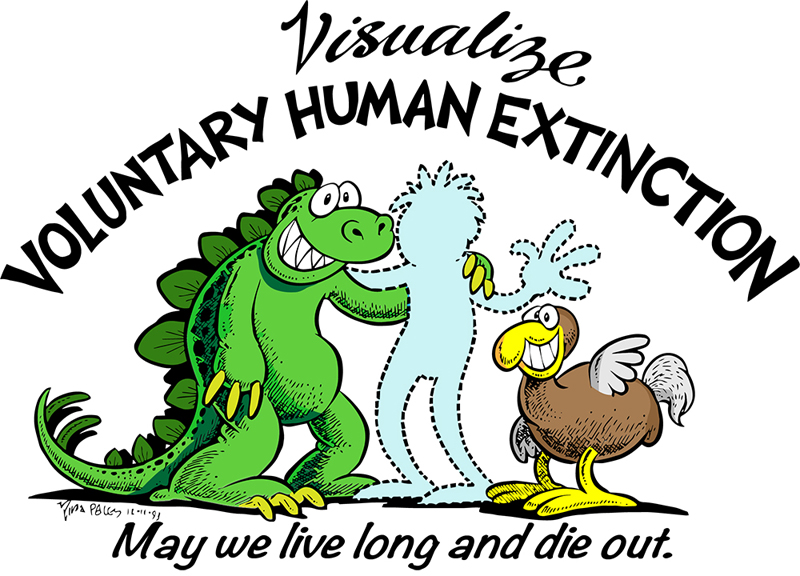
And now Stephanie Feldstein, Population and Sustainability Director at the Center for Biological Diversity, will share another perspective on human population pressures.
Having Kids
Center for Biological Diversity
References:
(1)
“In England and Wales the birth rate fell a generation before infant mortality fell.”
The Relationshp Between Infant and Child Mortality and Fertility: Some Historical and Contemporary Evidence for the United States
Much of the recent interest has centered on the following questions: Might exogenously caused declines in infant and child death rates induce partially or wholly offsetting declines in birth rates? Or will mortality-reducing programs, valuable in and of themselves, simply exacerbate already high rates of population growth? These questions form the focus in this volume.
There is, however, the complicating issue of reverse causality (or endogeneity). Lower (or higher) mortality might induce lower (or higher) fertility, but it is well established that higher birth rates lead to higher infant and child mortality.
(2) “...the age of onset of female reproduction should be sensitive to variation in mortality rates, and variation in the productivity of non-reproductive activities. In accordance with this prediction, most of the cross-national variation in women’s age at first birth can be explained by differences in female life expectancies and incomes... women have children younger in neighbourhoods where the expectation of healthy life is shorter and incomes are lower.”
(3) US Census Bureau World Vital Statistics.
(4) Maslow’s pyramid revised. “At the top of the new pyramid are three evolutionarily critical motives that Maslow overlooked – mate acquisition, mate retention and parenting. The researchers state in the article that while self-actualization is interesting and important, it isn’t an evolutionarily fundamental need.”
(5) Gates’ Valentine to BuffetThe following sources didn’t include the Gates’ Foundation’s reversal of the natalist perspective when writing about the valentine:
Forbes
Fortune
CNBC
AOL